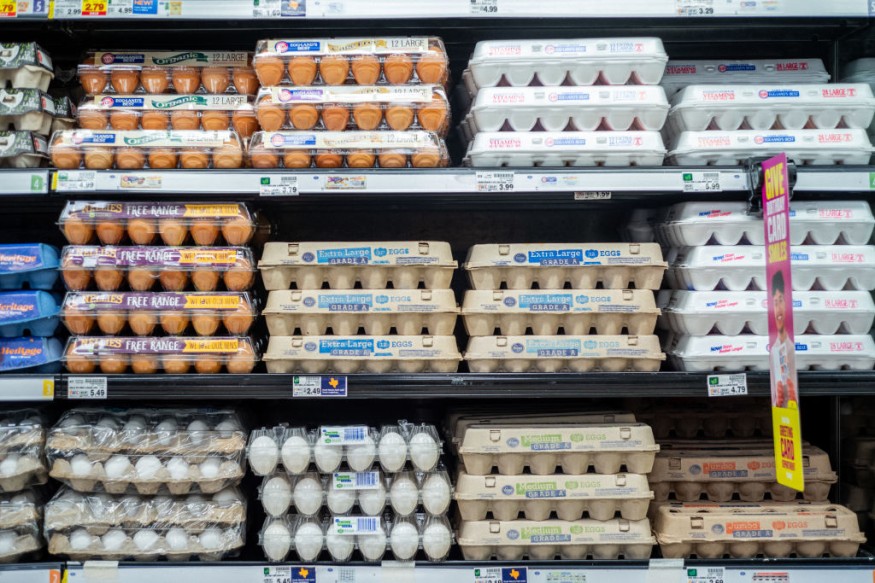Food inflation rate has increased significantly over the past year for many countries worldwide, where US egg prices have been overwhelming and the Philippine onion becomes the world's most expensive.
This comes as 2022 saw several major events, including the invasion of Russia on Ukraine and even extreme weather events.
Global Food Inflation

The global food inflation is interconnected by a myriad of factors, with economic experts attributing Russia's war in Ukraine to be a major factor; since military restrictions have resulted in the blockage of trade exports of various products, including flour, oil, and gas in the region.
Meanwhile, diseases are also a factor too, such as the avian flu outbreak in the US, which led to an egg price hike in the US since last year.
The global bird flu outbreak resulted in decreased supply of eggs, which in turn, resulted in increased consumer demand and higher price.
US egg prices have increased by 60% higher than it was last year, and other food and ingredients like milk, butter, and flour also followed.
Grocery prices remained high with an inflation rate of 11.8% year over year, according to a report released by the U.S. Bureau of Labor Statistics on Thursday, January 12, as cited by CNN.
Tom Bailey, a senior consumer foods analyst at Rabobank, stated even if we are seeing "inflationary pressures" ease, the war in Ukraine is still ongoing.
Fertilizer, energy, and labor costs are still high and remain a problem, as part of a long list of challenges the world is facing, Bailey adds.
Global Food Price Hike
Based on the said January 12 report, the U.S. Bureau of Labor Statistics states the following year over year inflation rate in the Consumer Price Index for various food categories as of December 2022:
- Elementary + secondary school food - 305.2%
- Eggs - 59.9%
- Margarine - 43.8%
- Fuel oil - 41.5%
- Motor fuels - 32.3%
- Butter - 31.4%
- Lettuce - 24.9%
- Flour - 23.4%
- Other dairy products - 21.4%
In addition to the ones mentioned above, the Philippine's onion became the world's most expensive, a symbol of the inflation crisis in the country.
The unprecedented high onion price forced Philippine President Ferdinand Marcos Jr. to launch public rolling stores, release smuggled goods, and importation from its neighboring countries, The Diplomat reported.
Meanwhile in Canada, food prices have soared at a higher rate than its consumer inflation rate since late 2021, according to a report by Statistics Canada, as cited by The New York Times on Saturday, January 7.
What is Inflation?
In economics, inflation is the increase of the price of products, particularly goods and services, relative to its former price within a given period of time.
However, this economic phenomenon is not as simple as one might think, since such price increase or price hike has a context behind it, especially based on agricultural, energy, and economic aspects.
According to the International Monetary Fund (IMF), inflation has placed countries into long periods of instability since the term also pertains to the rising cost of living consumers, which depend on the prices of the said commercial products within a given household budget.
In the past, many countries have grappled with inflation or even its severe for called hyperinflation, an increase of 1000% or more in a year, the IMF added.
In 2008, the US and some countries in the world experienced high inflation during global financial crisis, also called The Great Recession.
Nutrition and Health Impacts
Amid global food inflation, the rising cost of grocery prices forces consumers to experience lack of food supplies in their households or resort to alternative choices, leading to household food insecurity.
This is the case as seen in some countries experiencing not only inflation but also hyperinflation, including Zimbabwe in 2008, and Venezuela in recent years.
Research has asserted that increased household food insecurity is strongly linked with larger strain on the healthcare system, with greater emergency room visits, longer hospital stays, additional same-day surgeries, higher reliance on physician and home care services, and more frequent drug use prescription, as cited by The Conversation.
Related Article: Heatwaves, Crop Production Challenges Lead to "Heatflation"
© 2025 NatureWorldNews.com All rights reserved. Do not reproduce without permission.





